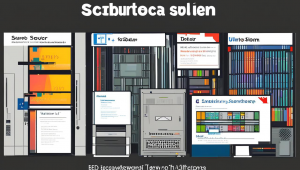In the digital age, English - related tools have become indispensable for language learners, educators, and professionals. English tool websites play a crucial role in helping users with tasks such as grammar checking, vocabulary building, translation, and pronunciation practice. To create an effective English tool website, having a well - structured and efficient source code is of utmost importance.

The source code of an English tool website serves as the foundation upon which the entire platform is built. It encompasses various programming languages and frameworks, each with its own set of functions and capabilities. For front - end development, HTML, CSS, and JavaScript are commonly used. HTML provides the basic structure of the web pages, defining elements like headings, paragraphs, and forms. CSS is responsible for the visual appearance of the site, allowing developers to style fonts, colors, and layouts. JavaScript, on the other hand, adds interactivity to the website. For example, it can be used to create dynamic drop - down menus, real - time grammar checking, or instant translation pop - ups.
When it comes to back - end development, languages like Python, Ruby, and Node.js are often employed. Python, with its simplicity and a wide range of libraries such as Django and Flask, is a popular choice for building server - side applications. These frameworks offer features like user authentication, database management, and API integration. For instance, an English tool website might use a database to store a large vocabulary list, user profiles, and usage statistics. Django provides built - in tools for interacting with databases like MySQL, PostgreSQL, and SQLite, making it easier for developers to manage data.
Node.js, based on JavaScript, is another powerful option for back - end development. It allows for non - blocking I/O operations, which means the server can handle multiple requests simultaneously without getting blocked. This is especially useful for an English tool website that may experience a high volume of traffic, such as during peak study hours. Node.js can also be used to build real - time applications, like a live feature for language exchange on the website.
In addition to programming languages, the source code of an English tool website should also consider security. Since the website may handle user data, including personal information and learning progress, it is essential to implement proper security measures. This includes using HTTPS to encrypt data transmission between the client and the server, hashing passwords to protect user accounts, and preventing common security vulnerabilities such as SQL injection and cross - site scripting (XSS).
Moreover, the source code should be modular and well - documented. Modular code makes it easier to maintain and update the website. For example, if the grammar checking module needs to be improved, developers can focus on that specific part of the code without affecting other functions. Good documentation helps new developers understand the codebase quickly, making it possible to collaborate effectively on the project.
Testing is also a critical aspect of the source code development process. Unit tests can be used to verify the functionality of individual components of the website, such as the spell - checking function or the translation API integration. Integration tests ensure that different modules work together seamlessly. User acceptance testing involves getting feedback from actual users to ensure that the website meets their needs and expectations.
The source code of an English tool website also needs to be optimized for performance. This includes minimizing the size of CSS and JavaScript files through techniques like minification and compression. Caching can also be implemented to reduce the load on the server and improve the response time for users. For example, frequently accessed vocabulary lists can be cached so that they don't need to be retrieved from the database every time a user requests them.
In conclusion, the source code of an English tool website is a complex and multi - faceted entity. It requires a combination of front - end and back - end development skills, security awareness, modular design, thorough testing, and performance optimization. By focusing on these aspects, developers can create a high - quality English tool website that provides a seamless and efficient experience for users, whether they are students learning English as a second language, teachers looking for teaching resources, or professionals in need of language assistance.








